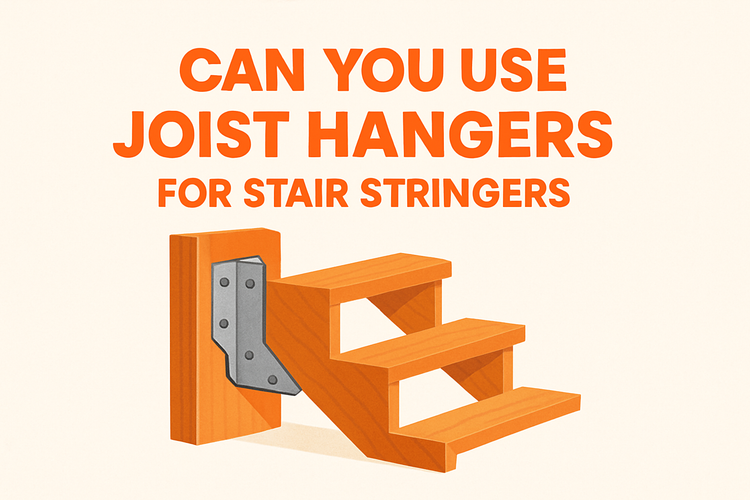Can You Use Joist Hangers For Stair Stringers

Can You Use Joist Hangers for Stair Stringers?
Joist hangers can indeed be used for stair stringers, especially in applications where support and stability are crucial. However, using the right type and size of hanger and installing them correctly plays a key role in ensuring safety and durability.
Understanding Joist Hangers and Their Primary Function
Joist hangers are metal brackets designed to anchor joists, helping to secure them to a ledger board or main frame. They are commonly used in deck construction to hold horizontal framing members in place. In the case of stair stringers, which are inclined framing members, joist hangers can be used if installed thoughtfully to optimize strength and angle support.
Joist hangers are engineered to handle vertical loads, which makes them suitable for stair stringers when the proper orientation and placement are maintained. Incorrectly installed hangers can compromise the integrity of the entire stair system. It's essential to match the hanger type to the angle and dimensional lumber of your stringers.
For enhanced performance and safety, many professionals recommend using heavy-duty joist hangers, particularly for exterior stairs, where weather and load demands are higher. These specialized hangers can be galvanized or stainless steel for added corrosion resistance.
How to Properly Install Joist Hangers With Stair Stringers
Installation begins with precise measurement and cutting of the stair stringers. Once the correct length and angle are determined, joist hangers can be affixed securely to a header or rim board using galvanized nails or structural screws designed for your specific hanger model.
The correct fasteners are critical. Using under-sized nails or omitting essential fixings can reduce the load capacity of the connection. Always refer to the manufacturer’s guidelines for proper installation, especially with sloped loads. In some cases, adjustable-angle hangers—designed to accommodate angled members such as stair stringers—offer the best performance.
Ensure the stringers sit fully supported within the hanger saddle. Any overhang or poor alignment can lead to stress concentration points and eventual failure. Use of backing support or sistered framing members may also improve weight distribution and stability over the lifespan of the stairs.
Advantages of Using Joist Hangers for Stair Stringers
Joist hangers offer a clean, reliable option for securing stair stringers to a supporting surface, especially in scenarios where end-bearing or through-bolting isn't practical. Hangers minimize movement over time and reduce chances of squeaking or framing separation.
They also provide flexibility in design and can be incorporated into both traditional and modern deck or stair constructions. When paired with compatible hardware like screws and nails, the system becomes both secure and code-compliant, making it favored by contractors and inspectors alike.
Another benefit is efficiency—joist hangers speed up installation without sacrificing structural integrity. This is especially beneficial in multi-staircase projects or in commercial applications where time is a premium.
When Joist Hangers Might Not Be the Right Fit
While joist hangers are generally effective, there are instances where they may not be the best choice for stair stringers. If the stringers must bear irregular loads or are not adequately supported on both top and bottom ends, relying solely on joist hangers could pose risks.
In such conditions, alternative supports like post base brackets or even angled framing elements such as angle brackets may perform better. The choice often depends on the building environment, exposure to weather, and expected foot traffic.
Additionally, improperly installed or undersized hangers can lead to long-term safety concerns. It’s always advisable to consult professional guidelines or a structural engineer, especially for elevated or high-weight stair applications.
